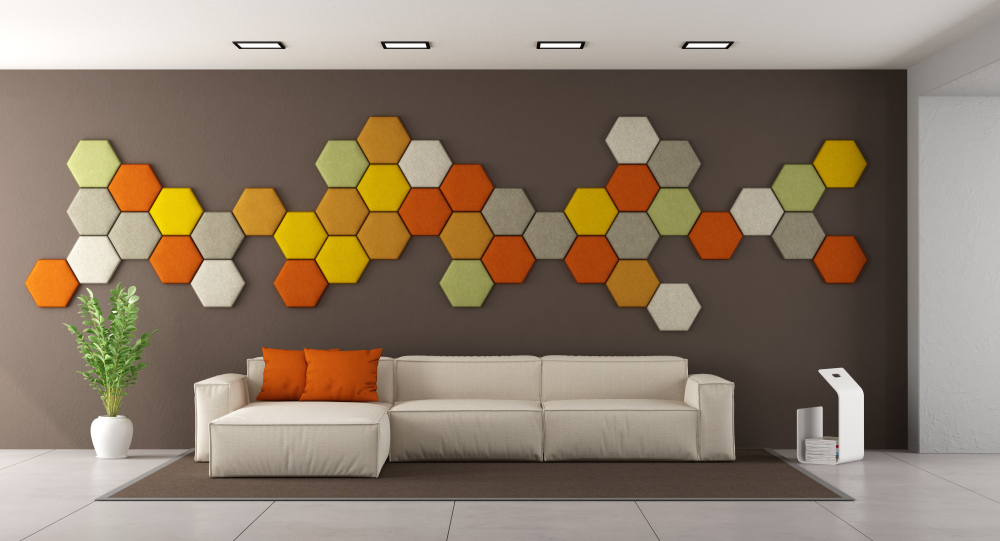How Do Acoustic Panels Work?

Acoustic panels are made from porous materials that essentially trap sound waves by turning acoustic energy into kinetic energy, or heat. This helps to reduce echo or reverberations caused by sound waves reflecting off hard surfaces such as drywall, metal, glass, concrete, tiles, and wood. Acoustic panels can be used to cover hard surfaces, helping to eliminate or reduce sound reflections that we perceive as echo or reverberation.
It is important to note that sound-absorbing acoustic panels do not block outside noise. These panels are used to reduce background noise in a space to improve sound quality and make it easier for everyone to hear. Soundproofing products are used to block sounds from nearby spaces, such as a noisy neighbor or outside traffic.
How Many Acoustic Panels Do I Need?
To decide which product is best for your project, consider what your end goal is, the space you have to work with, and the acoustic challenges of the area. If you are uncertain how many acoustic panels you need, then you can use this handy Acoustic Panel Calculator to figure it out.
There are many different types of acoustic panels, such as wall panels, baffles, sound blankets, and more. The effectiveness of acoustic treatment varies based on many factors, such as the amount of surface being covered, the type of material, and the thickness of the material. The more surface area covered with the right panels, the better the acoustic result.
What Types of Panels Are Available?
Ambience wall panels are an industry standard, and are used in commercial and residential projects alike. They are popular due to their good value per surface area covered, and they come in a variety of colors, shapes, and sizes to match any aesthetic. They can also be made from a wide variety of materials, such as polyester felt panels, cotton, wood, and foam.
If you need to reduce noise, echoes, and reverberation, or improve the clarity of speech within a specific location, you may want to look into installing sound-absorbing baffles. Baffles are sections of sound-absorbing material that usually hang from a ceiling in order to capture and reduce sound. They come in a variety of forms, such as squares, ribbons, rods, and panels.
Where To Place Acoustic Panels?
The best placement for acoustic panels depends on what the space is being used for, and the location of the source of the noise and the listener. If acoustic panels are being installed in a large room that will have multiple listeners, then the panels should be spaced throughout the room to ensure good sound quality from any location. If the room has a set source of sound, like a stage or home theater, then acoustic panels would be able to absorb the most sound from the direction the sound is coming from, usually directly behind the listeners or to the sides.
Acoustic panels can be placed lower to the ground in areas where people will be sitting, such as conference rooms, and should be placed higher in areas where the audience is standing, such as concerts and venues. These panels can also be placed on the ceiling, or you can use baffles to help absorb sound that echoes from above. If the room is an asymmetrical shape, or does not allow an even placement of acoustic panels along the walls, then adding ceiling panels and baffles in key strategic locations can help to create an acoustically symmetrical environment.
|
|
|

